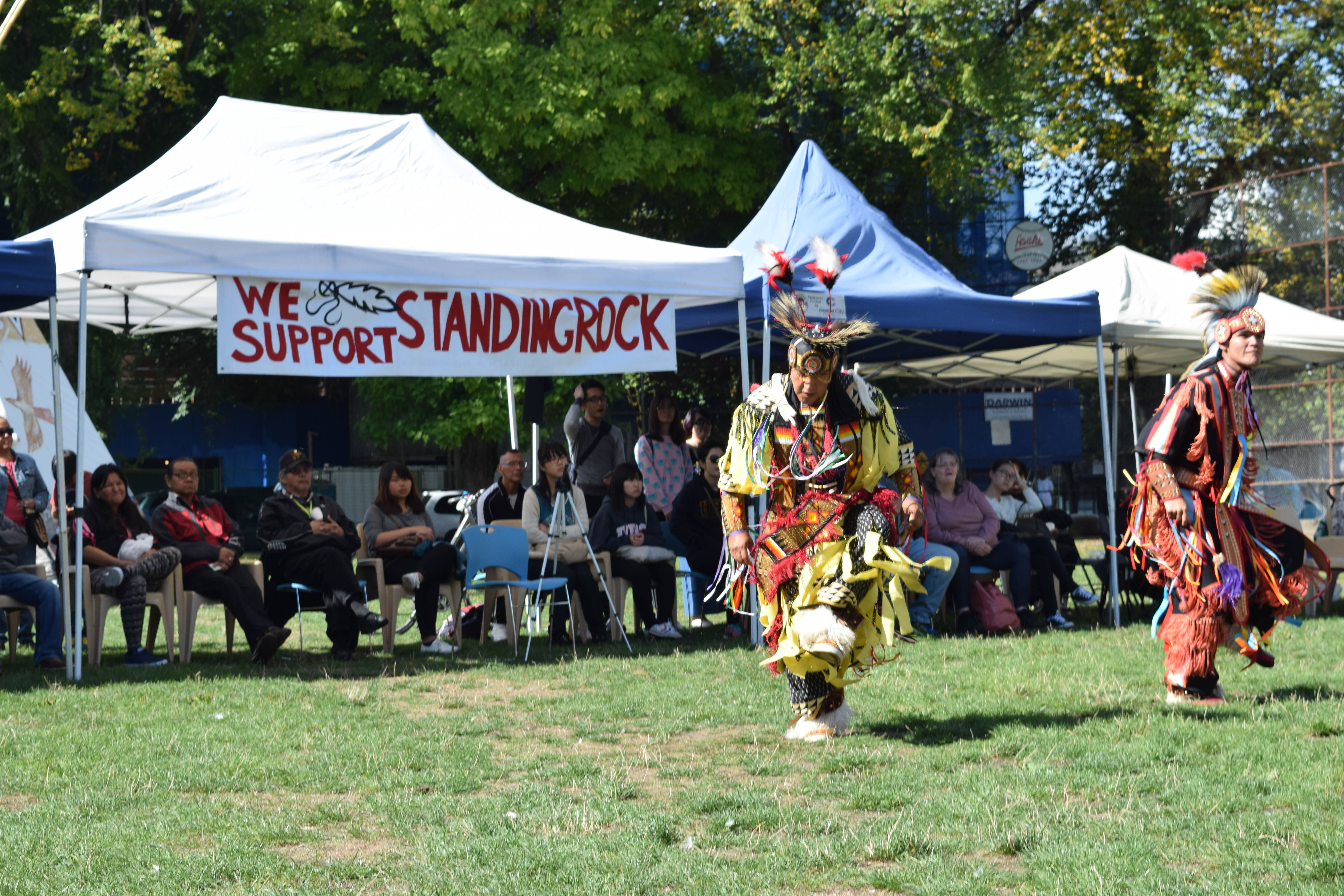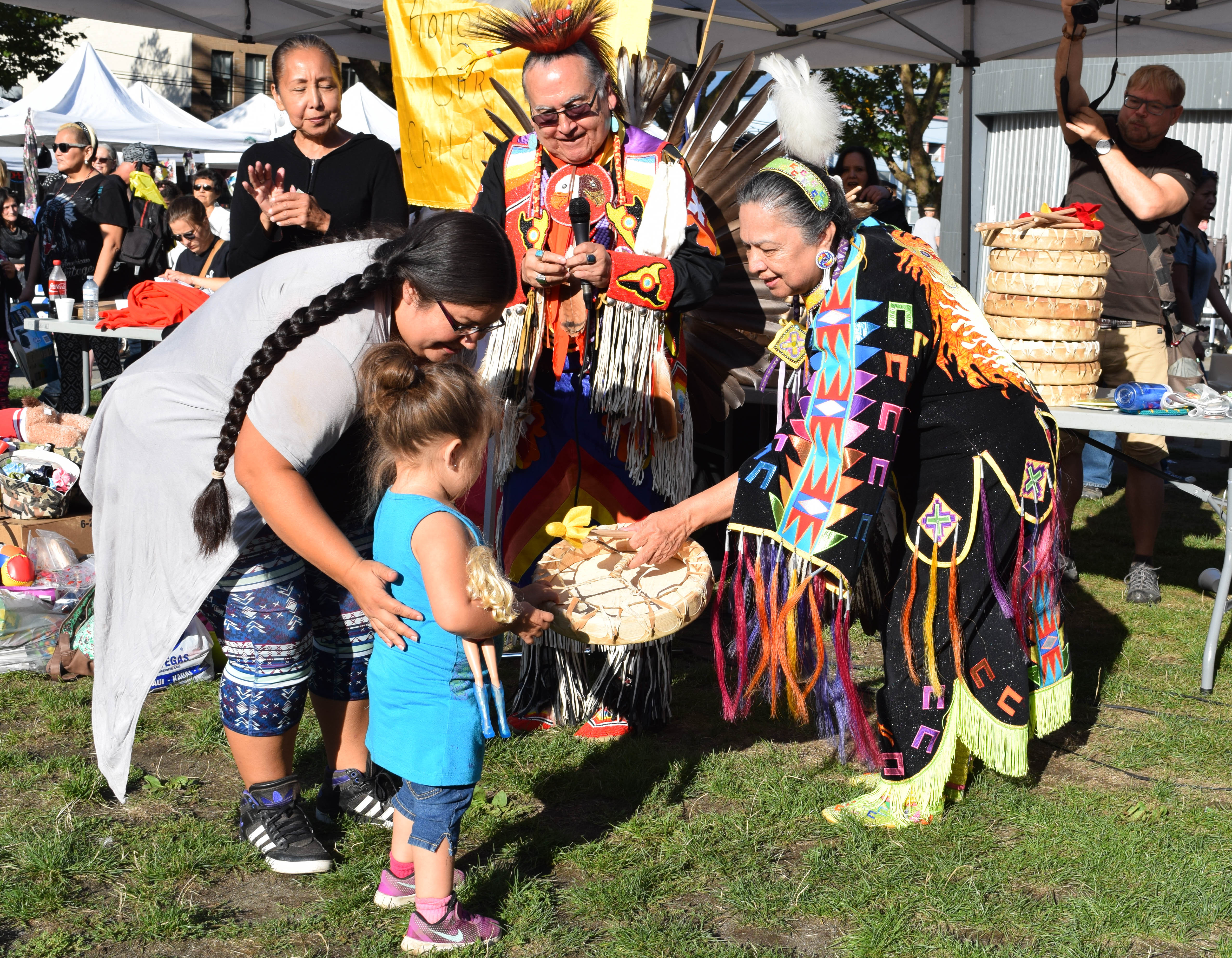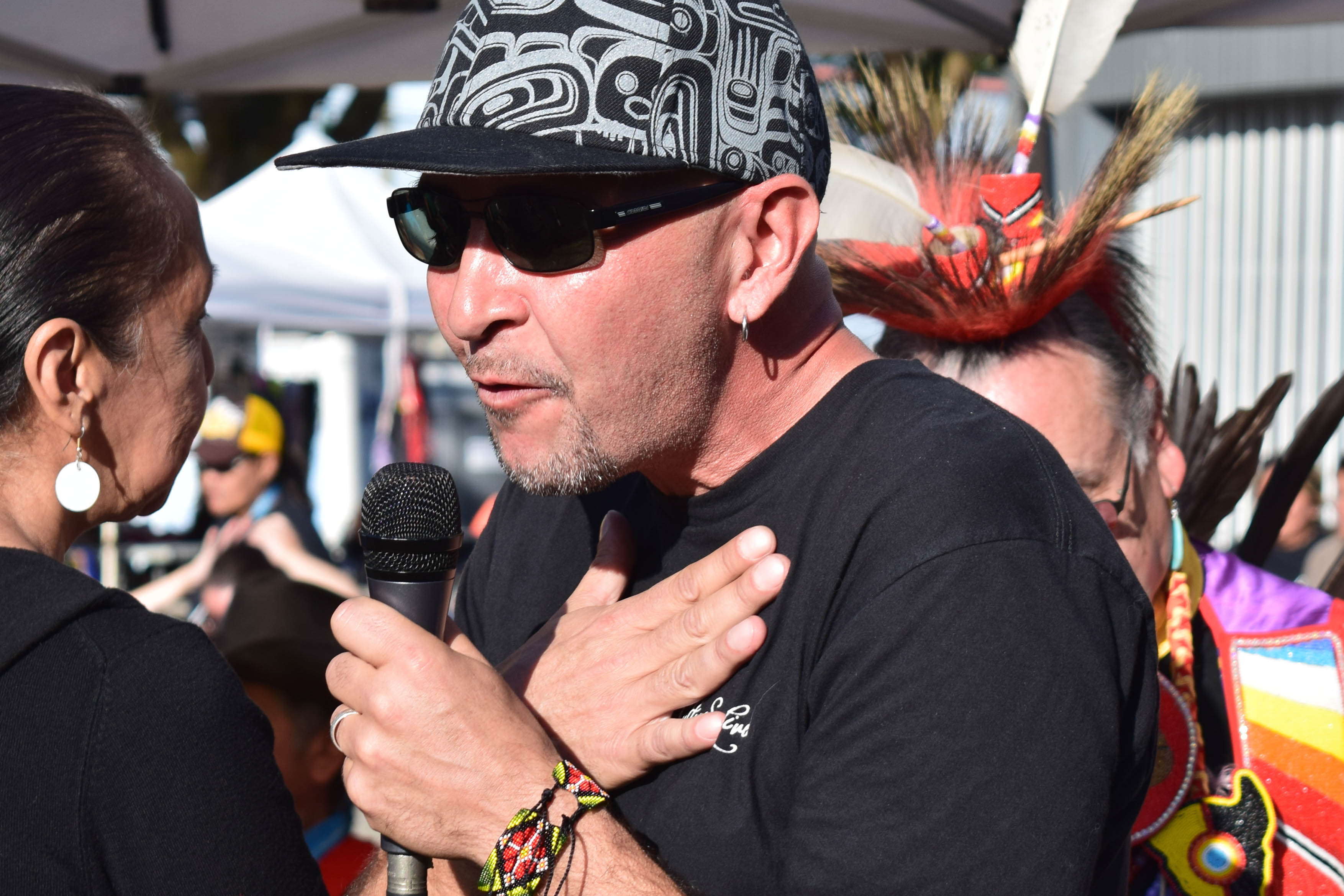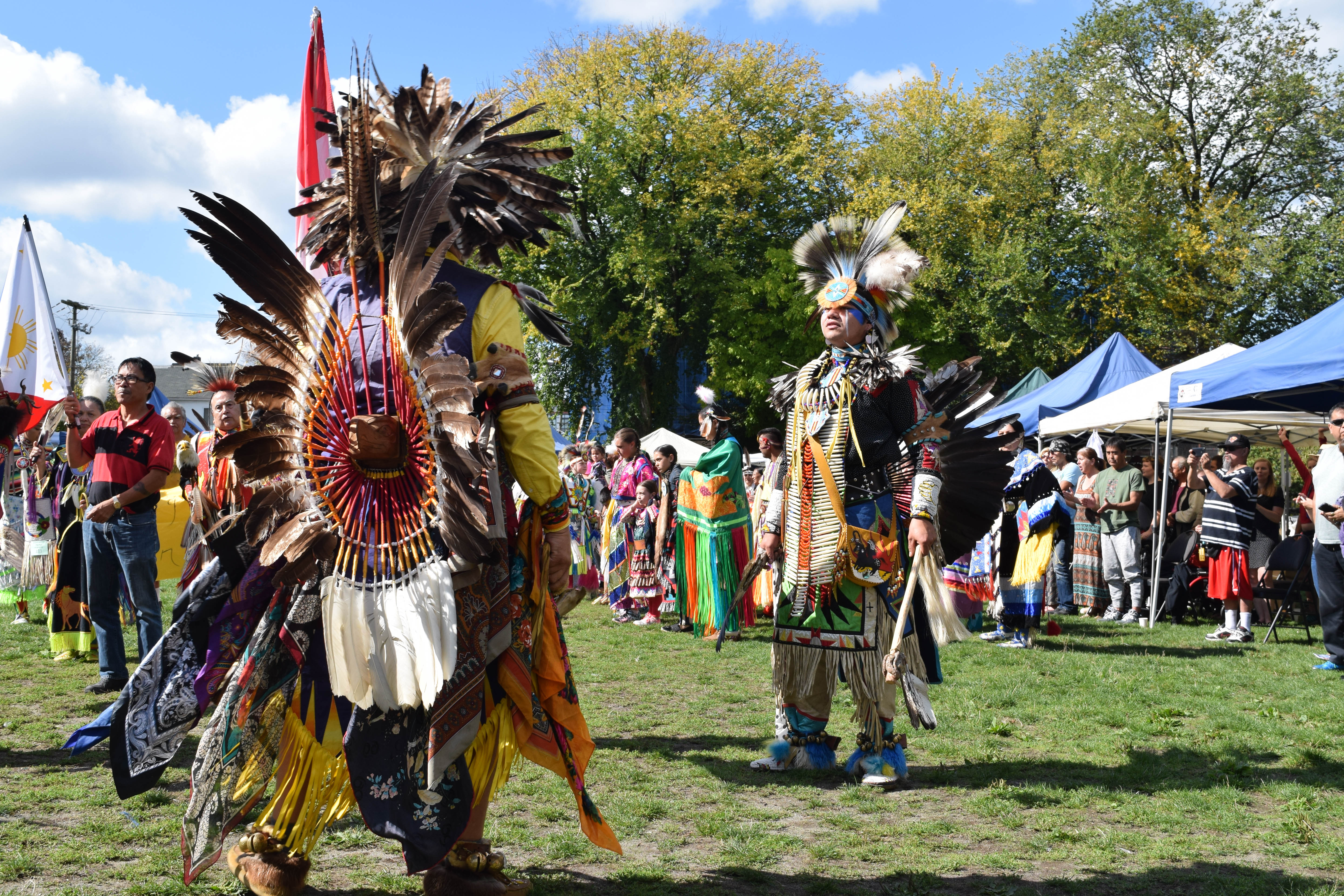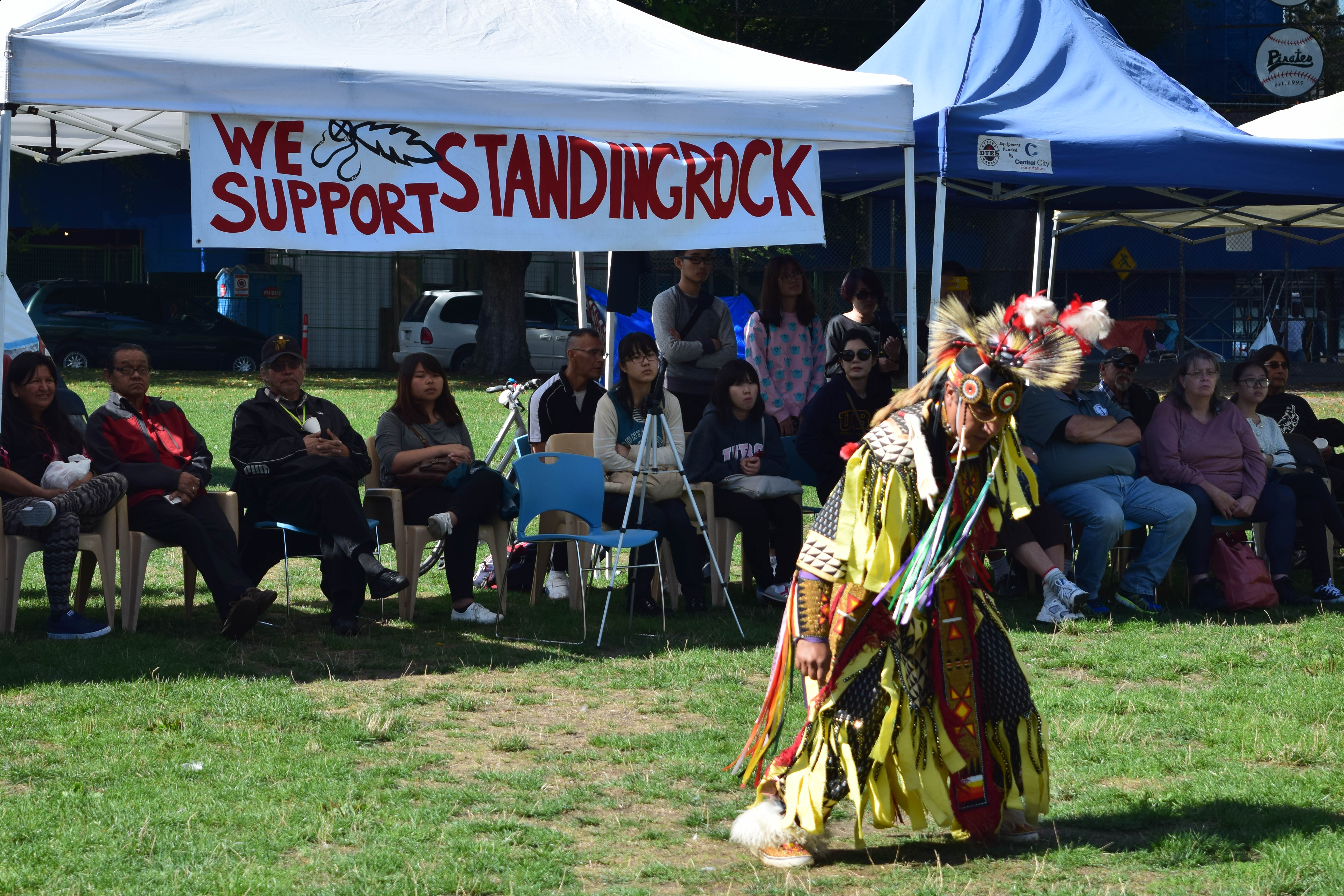Regalia-clad dancers and a “we support Standing Rock” banner filled Vancouver’s Oppenheimer Park Sunday for the fifth annual Downtown Eastside powwow on Sunday.
The focus of the celebration shifted this year from elders to children, a move that’s not only part of a four-year cycle of change but also symbolizes looking to the future.
“We’re big supporters of Standing Rock. I think it ties in so nicely with the powwow because that’s what they’re standing up for — it’s the future generations,” said Patrick Smith with Culture Saves Lives.
Photo by Megan Devlin: Child being gifted drums at the powwow
The shift in focus to children was intended to invest “cultural capital” in the increasing number of children living in the DTES, Smith said.
Smith explained the beating of the drum resembles the beating of the heart while in the womb, and these drums are symbolic in helping children find their identity.
Photo by Megan Devlin: Child being gifted drums at the powwow
Kat Norris, a Salish writer and activist, pointed out that powwow itself is a form of resistance.
“To me, just bringing our people together is a form of activism. Because back in the day we weren’t allowed to gather together,” she said.
Photo by Megan Devlin: Kat Norris, who thinks the powwow itself is a form of activism
Norris also teaches dance and powwow in the neighbourhood, and her students are quick to pick up why it’s important.
“I think it’s an honour to dance,” said Vinaya Jobin, and 11-year-old student at Strathcona Elementary with roots in the Siksika Nation who dances women’s fancy and jingle. “I’ve learned that powwow has been a part of our culture for a very long time.”
That access to culture was something Smith saw was missing in the DTES. That’s why he started the powwow in 2011.
“I’d been working on East Hastings for 17 years doing outreach,” Smith said. “So one elder I was visiting doing outreach, he was paraplegic. He really wanted to go to a powwow, but you know, access was always [a problem]. So he kept bugging me for about six months.”
In the end, Smith said he’d do it.
Photo by Megan Devlin: Patrick Smith, powwow organizer with Culture Saves Lives who says the theme of this year’s powwow is standing up for and honouring future generations
“There’s so many First Nations people in the Downtown Eastside from all over Canada, and it’s the biggest urban [Indigenous] population in Canada. Yet, if you look at — and I have — the amount of funds that get designated for cultural programming it’s very miniscule,” Smith said.
His organization, Culture Saves Lives, tries to fill gaps in the traditional healthcare system. So organizing the powwow seemed like a natural fit.
Photo by Megan Devlin: Dancers in regalia.
“It’s just a way for people to come together, celebrate, enjoy, create identity,” he said.
Norris agrees. “It Shows the people of the DTES that they’re respected and honoured as well. And they don’t feel left out,” she said.
As for the Standing Rock banner, Norris thinks expressing solidarity with those protesting the North Dakota Access Pipeline can bring people together who can’t travel there physically.
“We all feel as one in our show and visual of support… to lift a little bit of that fear and frustration and powerlessness that we feel for the people of Standing Rock,” she said.
Like this article? rabble is reader-supported journalism. Chip in to keep stories like these coming.
Megan Devlin is a multimedia journalist from Toronto who is currently based in Vancouver. She was rabble’s 2015 summer intern. Follow her on Twitter @MegDevlinn
Photos: Megan Devlin

